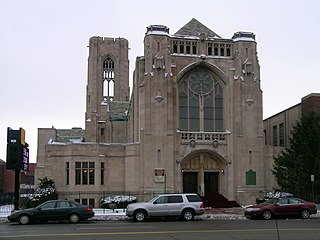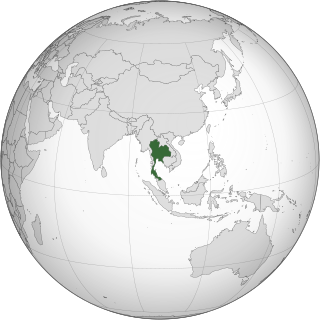
Agritourism or agrotourism involves any agriculturally based operation or activity that brings visitors to a farm or ranch. It encompasses a wide range of activities, including direct-to-consumer sales such as farm stands and u-pick, agricultural education through school visits, hospitality services like overnight farm stays, recreational activities such as hunting and horseback riding, and entertainment events like hayrides and harvest dinners. These activities provide an additional source of income for farmers and help sustain small-scale farms.

Community-supported agriculture or cropsharing is a system that connects producers and consumers within the food system closer by allowing the consumer to subscribe to the harvest of a certain farm or group of farms. It is an alternative socioeconomic model of agriculture and food distribution that allows the producer and consumer to share the risks of farming. The model is a subcategory of civic agriculture that has an overarching goal of strengthening a sense of community through local markets.

Urban agriculture refers to various practices of cultivating, processing, and distributing food in urban areas. The term also applies to the area activities of animal husbandry, aquaculture, beekeeping, and horticulture in an urban context. Urban agriculture is distinguished from peri-urban agriculture, which takes place in rural areas at the edge of suburbs.

Victory gardens, also called war gardens or food gardens for defense, were vegetable, fruit, and herb gardens planted at private residences and public parks in the United States, United Kingdom, Canada, Australia and Germany during World War I and World War II. In wartime, governments encouraged people to plant victory gardens not only to supplement their rations but also to boost morale. They were used along with rationing stamps and cards to reduce pressure on the food supply. Besides indirectly aiding the war effort, these gardens were also considered a civil "morale booster" in that gardeners could feel empowered by their contribution of labor and rewarded by the produce grown. This made victory gardens a part of daily life on the home front.

West Oakland is a neighborhood situated in the northwestern corner of Oakland, California, United States, situated west of Downtown Oakland, south of Emeryville, and north of Alameda. The neighborhood is located along the waterfront at the Port of Oakland and at the eastern end of the San Francisco–Oakland Bay Bridge. It lies at an elevation of 13 feet.
Rancho Mission Viejo is an active 23,000 acres (9,300 ha) ranch and farm, habitat reserve, residential community, and census-designated place in South Orange County, California. Rancho Mission Viejo originated as a series of land grants to John Forster in 1845. The remaining part of Rancho Mission Viejo consists of a nearly 17,000-acre (6,900 ha) nature reserve and multiple residential communities slated to open in phases between 2010 and 2030. As of the 2020 census, it had a population of 10,378.

A community garden is a piece of land gardened or cultivated by a group of people individually or collectively. Normally in community gardens, the land is divided into individual plots. Each individual gardener is responsible for their own plot and the yielding or the production of which belongs to the individual. In collective gardens the piece of land is not divided. A group of people cultivate it together and the harvest belongs to all participants. Around the world, community gardens exist in various forms, it can be located in the proximity of neighborhoods or on balconies and rooftops. Its size can vary greatly from one to another.

Czech University of Life Sciences Prague is a university of agricultural education and research in Prague, the Czech Republic, established in 1906.

A hobby farm is a smallholding or small farm that is maintained without expectation of being a primary source of income. Some are held simply to bring homeowners closer to nature, to provide recreational land for horses, or as working farms for secondary income.

Urban horticulture is the science and study of the growing plants in an urban environment. It focuses on the functional use of horticulture so as to maintain and improve the surrounding urban area. Urban horticulture has seen an increase in attention with the global trend of urbanization and works to study the harvest, aesthetic, architectural, recreational and psychological purposes and effects of plants in urban environments.
Urban homesteading can refer to several different things: programs by local, state, and federal agencies in the USA who work to help get people into city homes, squatting, practicing urban agriculture, or practicing sustainable living techniques.

Community gardens in the United States benefit both gardeners and society at large. Community gardens provide fresh produce to gardeners and their friends and neighbors. They provide a place of connection to nature and to other people. In a wider sense, community gardens provide green space, a habitat for insects and animals, sites for gardening education, and beautification of the local area. Community gardens provide access to land to those who otherwise could not have a garden, such as apartment-dwellers, the elderly, and the homeless. Many gardens resemble European allotment gardens, with plots or boxes where individuals and families can grow vegetables and flowers, including a number which began as victory gardens during World War II. Other gardens are worked as community farms with no individual plots at all, similar to urban farms.

The North End is a neighborhood located in Detroit, Michigan. It is located in the Woodward Corridor, a densely populated region along Woodward Avenue that stretches from Downtown Detroit to the suburb of Pontiac. The North End has been home to several development initiatives, seen by many as an area for future development extending from Downtown and Midtown.
The Food Justice Movement is a grassroots initiative which emerged in response to food insecurity and economic pressures that prevent access to healthy, nutritious, and culturally appropriate foods. The food justice movement moves beyond increasing food availability and works to address the root cause of unequal access to adequate nutrition. Like other Environmental Justice initiatives, the Food Justice Movement advocates for rights-based solutions that identify the underlying human rights that allow individuals to achieve adequate food security and nutrition. This differs from policy-based solutions that focus on food availability and affordability by increasing food production or lowering the cost of food.
Keep Growing Detroit is an organization dedicated to food sovereignty and community engagement in the cities of Detroit, Hamtramck, and Highland Park. Founded in 2013, the program designs and implements initiatives that promote the practice of urban agriculture as a mode of food justice for underrepresented communities, particularly those who do not have access to healthy food options. The goals of Keep Growing Detroit are to educate and empower community members using urban agricultural practices. Programs such as the Garden Resource Program and Grown in Detroit served as catalysts, laying the foundation for Keep Growing Detroit.

Squatting in Fiji is defined as being "a resident of a dwelling which is illegal according to planning by-laws regardless of whether the landowner has given consent". As of 2018, an estimated 20% of the total population was squatting, including people living on land owned by indigenous clans with informal permission. Most squatters are on the larger islands such as Vanua Levu and Viti Levu.

Squatting in Venezuela is the occupation of derelict buildings or unused land without the permission of the owner. Informal settlements, known first as "ranchos" and then "barrios", are common. In the capital Caracas notable squats have included the 23 de Enero housing estate, Centro Financiero Confinanzas and El Helicoide, a former shopping centre which is now a notorious prison.

Urban areas in the Philippines such as Metro Manila, Metro Cebu, and Metro Davao have large informal settlements. The Philippine Statistics Authority defines a squatter, or alternatively "informal dwellers", as "One who settles on the land of another without title or right or without the owner's consent whether in urban or rural areas". Squatting is criminalized by the Urban Development and Housing Act of 1992, also known as the Lina Law. There have been various attempts to regularize squatter settlements, such as the Zonal Improvement Program and the Community Mortgage Program. In 2018, the Philippine Statistics Authority estimated that out of the country's population of about 106 million, 4.5 million were homeless.

Squatting in Thailand was traditionally permissible under customary law and adverse possession can occur after ten years of continuous occupation. As of 2015, the capital Bangkok had over 2 million squatters, out of a population of around 10 million. A survey of slums across the country noted in 2000 that most were rented not squatted; Khlong Toei District in Bangkok contains both squatters and tenants. There are also squatters in rural areas. The 1975 Agricultural Land Reform Act aimed to redistribute land to poor people under the Sor Por Kor program and as of 2019, 36 million rai of land had been assigned.
Urban agriculture is the practice of cultivating, processing, and distributing food in or around urban areas. It is the growing of fresh produce within the city for individual, communal, or commercial purposes in cities in both developed and developing countries.















